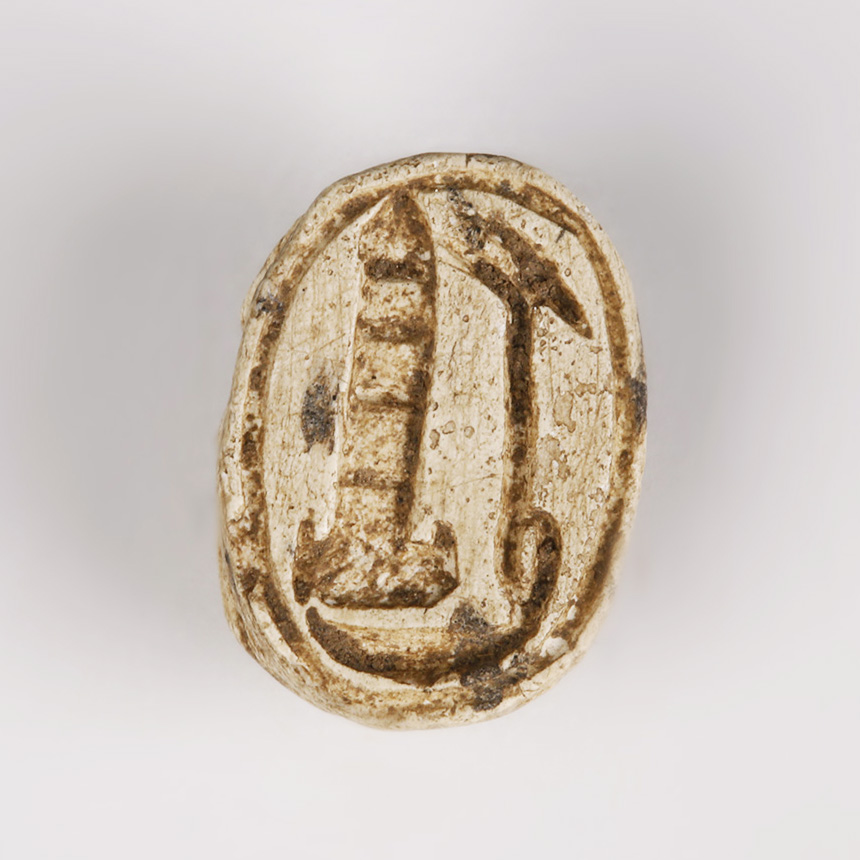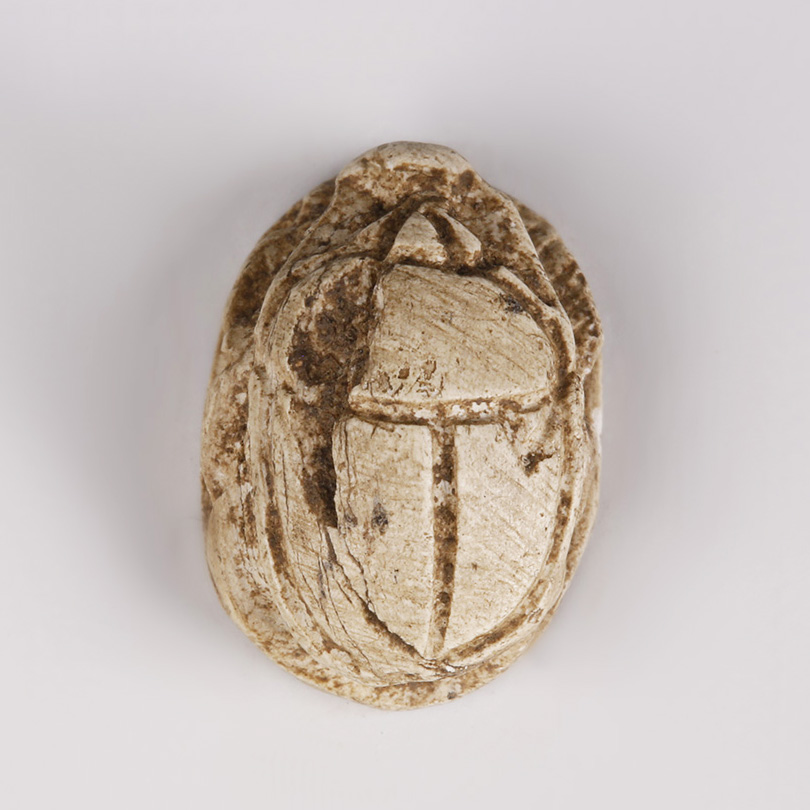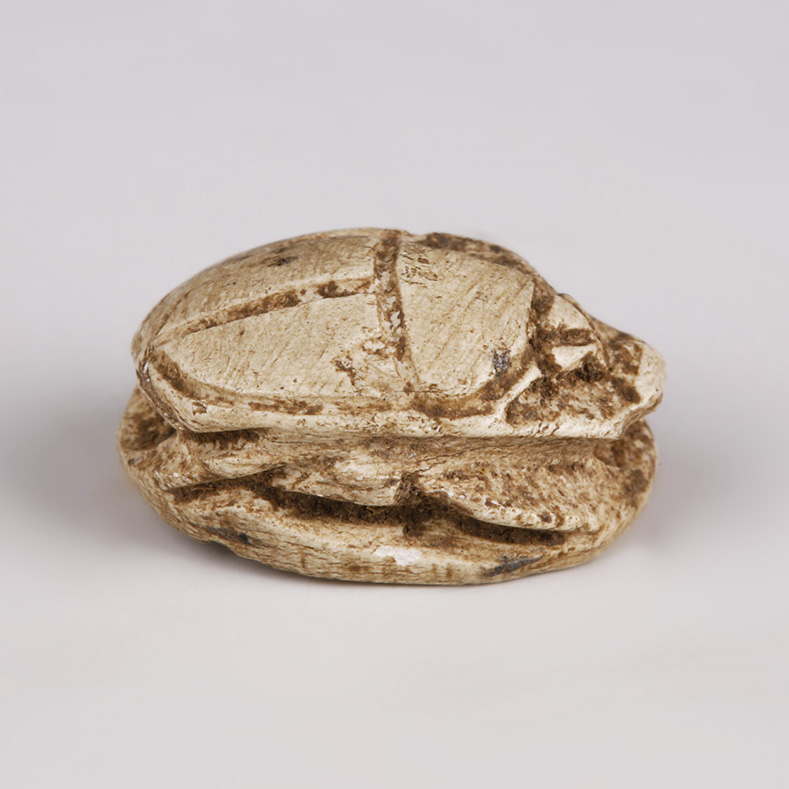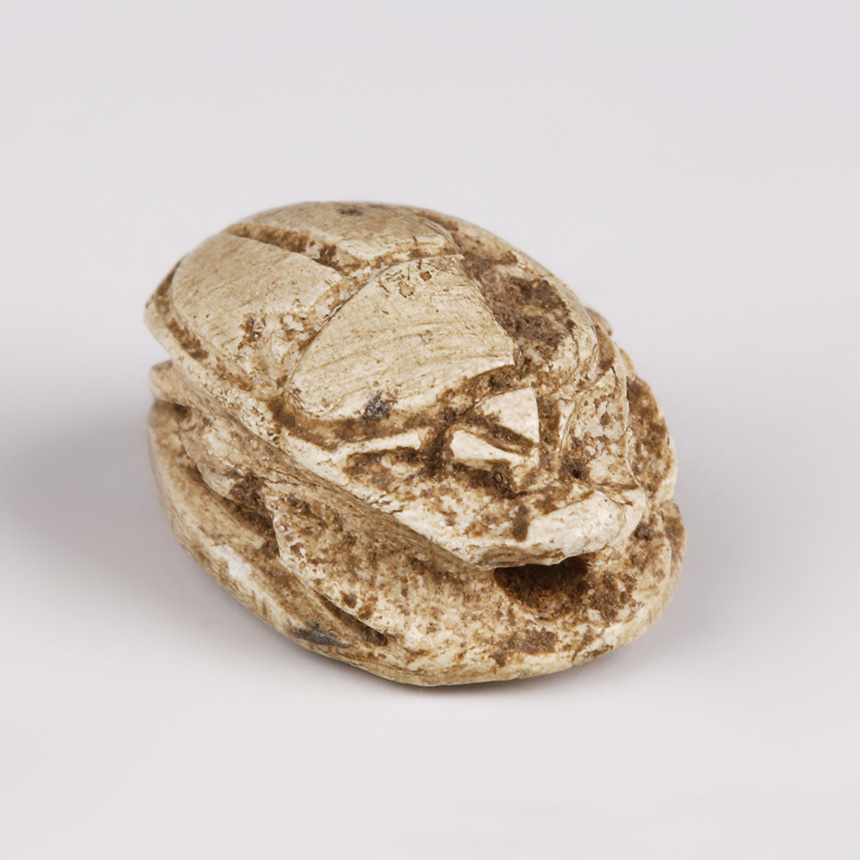This particular scarab is dedicated to the god Amun. The deity is referenced by both the obelisk and the ‘was’ spectre.
According to the Heliopolitan creation myth, Atum wished himself into existence from Nun, emerging as the mythical Bennu bird. Flying to Heliopolis, he descended on the Benben, the mound that arose from the primordial waters and the peak of a pyramid. The capstone of an obelisk is thus associated with both the Bennu and the Benben.
The ‘w3s’ sceptre, commonly transliterated as ‘was’, was a well used hieroglyph. It was both an ideogram and determinative, as well as being a physical object used by Royalty. Described as a staff with the head of an animal, sometimes characterised as a Set animal head. It was a physical representation of the pharaoh’s power and dominion. The sign was also used to represent the city of Thebes, which was called Waset by the Ancient Egyptians. Thebes rose to prominence during the 18th Dynasty, becoming the capital of a unified Egypt and extensive building work to its temples and tombs was completed. Amun became the titular god of the city in the 11th Dynasty and we see the emergence of the Precinct of Amun-Re at Karnak under the pharaoh Senusret I.
Scarabs dedicated to particular gods with dedicated wishes and blessings became popular during the late New Kingdom and Third Intermediate Period, circa 1295 – 664 BC. With limited space available to them on the reverse of the scarab, the ordering and formation of hieroglyphs was sometimes unique. Here the craftsman has dedicated the scarab to Amun with two carefully and well-chosen signs, instantly attributed to the god.
To find out more about Ancient Egyptian amulets please see our relevant blog post: Egyptian Amulets and their Meanings.




